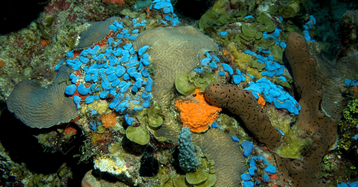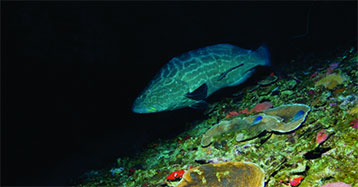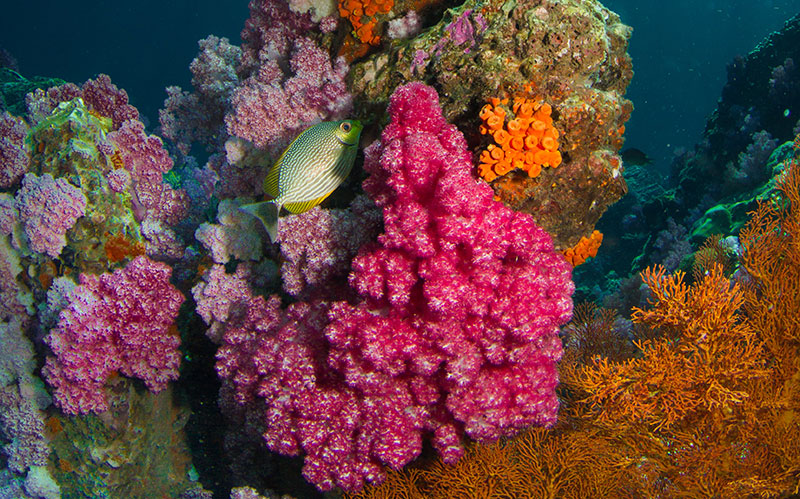Mesophotic Coral Ecosystems
Imagine a coral reef. Chances are you are thinking about those corals that live in the top 100 feet (30 m) of the ocean. In tropical and subtropical waters, light-dependent coral ecosystems can extend to depths over 500 feet (150 m). These deeper coral ecosystems are known as mesophotic (middle-light) coral ecosystems. They occur between brightly lit shallow waters and the deepest, darkest depths of the ocean. NCCOS mesophotic coral science includes mapping, habitat characterization, developing predictive habitat maps, damage assessment, and investigation of coral ecosystem connectivity between shallow and mesophotic depths.
NCCOS Mesophotic Coral Science
Mesophotic coral ecosystems consist of light-dependent corals and associated communities found at depths ranging from 30 to 150 m beneath the ocean surface in tropical and subtropical regions. They are populated with organisms typically associated with shallow coral reefs, such as corals, macroalgae, sponges, and fish, as well as species unique to mesophotic depths or deeper. In some areas, such as American Samoa, nearly 80% of their coral habitat is at mesophotic depths, yet these reefs remain relatively unknown.
Since 2006, NCCOS has led a focused effort to shed light on these understudied communities, the ecological role they play, and their potential to help replenish degraded shallower reef populations. Our research has led to the expansion of the Pulley Ridge Habitat Area of Particular Concern to include new coral habitat, as well as documentation of injury to mesophotic sea fans from the Deepwater Horizon oil spill.
Mesophotic Coral Restoration
Mesophotic and deep benthic communities (MDBC) are vast and complex ecosystems on the ocean floor that are foundational to Gulf of Mexico food webs. In 2010, more than 770 square miles of deep-sea habitat and four square miles of mesophotic habitat were damaged by the Deepwater Horizon oil spill. We are working on a collaborative set of projects to better understand and restore these ecosystems, including seafloor mapping, ground-truthing, habitat modeling, and coral propagation, with the overarching goal to improve our understanding, inform better management, and ensure resiliency of MDBC.
Take a Closer Look: Mesophotic Corals
As the documented decline of shallow coral reefs continues, it is important to understand the value and role of mesophotic coral ecosystems. Not only do shallow and mesophotic ecosystems share common species, but they both serve as essential fish habitat for economically and ecologically important species. Essential fish habitat refers to the waters and substrate necessary for fish to spawn, breed, feed, or grow to maturity. Because of their shared species, scientists have hypothesized that mesophotic coral ecosystems may serve as potential sources to reseed or replenish degraded shallow-water coral reef species. Further, these ecosystems are adapted to extreme conditions (low-light), which may yield ‘novel’ compounds that can be used to develop natural products from the sea (e.g., cancer drugs and skin care products) that benefit mankind.
 Official websites use .gov
A .gov website belongs to an official government organization in the United States.
Official websites use .gov
A .gov website belongs to an official government organization in the United States. Secure .gov websites use HTTPS
A lock or https:// means you’ve safely connected to the .gov website. Share sensitive information only on official, secure websites.
Secure .gov websites use HTTPS
A lock or https:// means you’ve safely connected to the .gov website. Share sensitive information only on official, secure websites.








